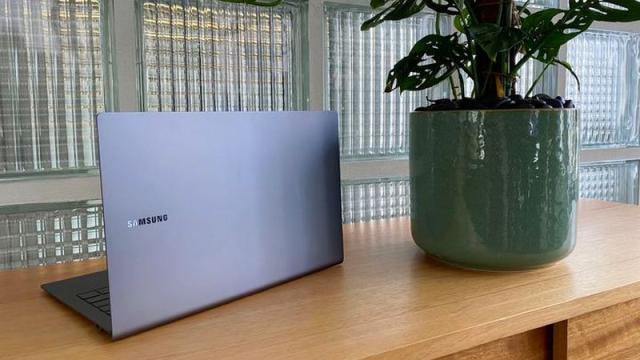At the arse-end of Samsung’s Galaxy Note 10 launch last year, the company unveiled an ultra-light Windows 10 ARM-based laptop with nano SIM functionality.
Just shy of six months later the Samsung Galaxy Book S will be unleashed into the wild. Here’s how much it will set you back in Australia.
[referenced url=”https://gizmodo.com.au/2020/01/samsung-galaxy-book-s-first-look-australia/” thumb=”https://gizmodo.com.au/wp-content/uploads/2020/01/s-book-2-410×231.jpg” title=”Samsung Galaxy S Book First Look: I Really Want To Like This” excerpt=”For the past 6-ish months we have been anticipating Samsung’s new ultra-light ARM-based laptop. Announced during last year’s Note 10 launch, it promised portability, power and LTE functionality. It’s finally gotten a release date in Australia and I was afforded the opportunity to give it a quick whirl ahead of it hitting the shelves.”]
You’ll find more details in my first look, but what you’re basically getting is a 13.3-inch laptop in an ultra-light chassis. And at under 1kg I really do mean ultra-light.
I only got to play with it for about half an hour so can only comment on the surface level feel and function, but so far I’m impressed. The the 10-point multi touch screen has a quick response time and feels good to the touch. Similarly, the keyboard’s shallow keys feel good to type on – I only hope they can handle my loud and bashy keystrokes on a long term basis.
Another thing worth calling out is the wild appearance of a headphone jack. Personally, I’m here for it.
Under the hood you’ll find 8GB RAM, 256GB on-board storage (no 512GB variant for Australia, boo) and a Snapdragon 8cx processor. The battery is fast charging and is said to provide 25 hours of video playback. That’s… a lot.
While I want to be excited about this, I’m also wary that this could absolutely not be how it performs in practice or in battery run down tests. Or if it is accurate, it could indicate a lack of processing power and performance. That being said, the Galaxy Book S is said to have 40 per cent faster CPU performance and 80 per cent better graphics than the Galaxy Book 2, which was also an ARM-based machine.
I guess we’ll see once I get the chance to review it properly, but my take so far is that this is a machine for people who don’t need to do anything overly labour intensive such as video editing or gaming.
Here’s a full list of the key specs:
- Display: 13.3-inch FHD TFT
- Processor: Snapdragon 8cx
- RAM: 8GB
- Storage: 256GB on board with expandable storage option up to 1TB
- Battery: 42Wh battery with fast charge and 25 hours of video playback
- Ports: 2 x USB-C, micro-SD, headphone jack
- Connectivity: 802.11ac Wi-Fi and nano SIM
- Sensors: Fingerprint Sensor, Hall Sensor, Light Sensor (Keyboard Backlit on/off)
- Dimensions: 305.2 x 203.2 x 6.2-11.8mm
- Weight: 0.96 kg
- Colour options: Mercury Grey and Earth Gold
The Samsung Galaxy Book S will go on sale in Australia on January 31 and will have an RRP of $1,699. Despite its LTE capabilities there’s no current plans to sell them through telcos, but you will be able to pick one up from JB Hi-Fi, Harvey Norman and Samsung’s own stores.
